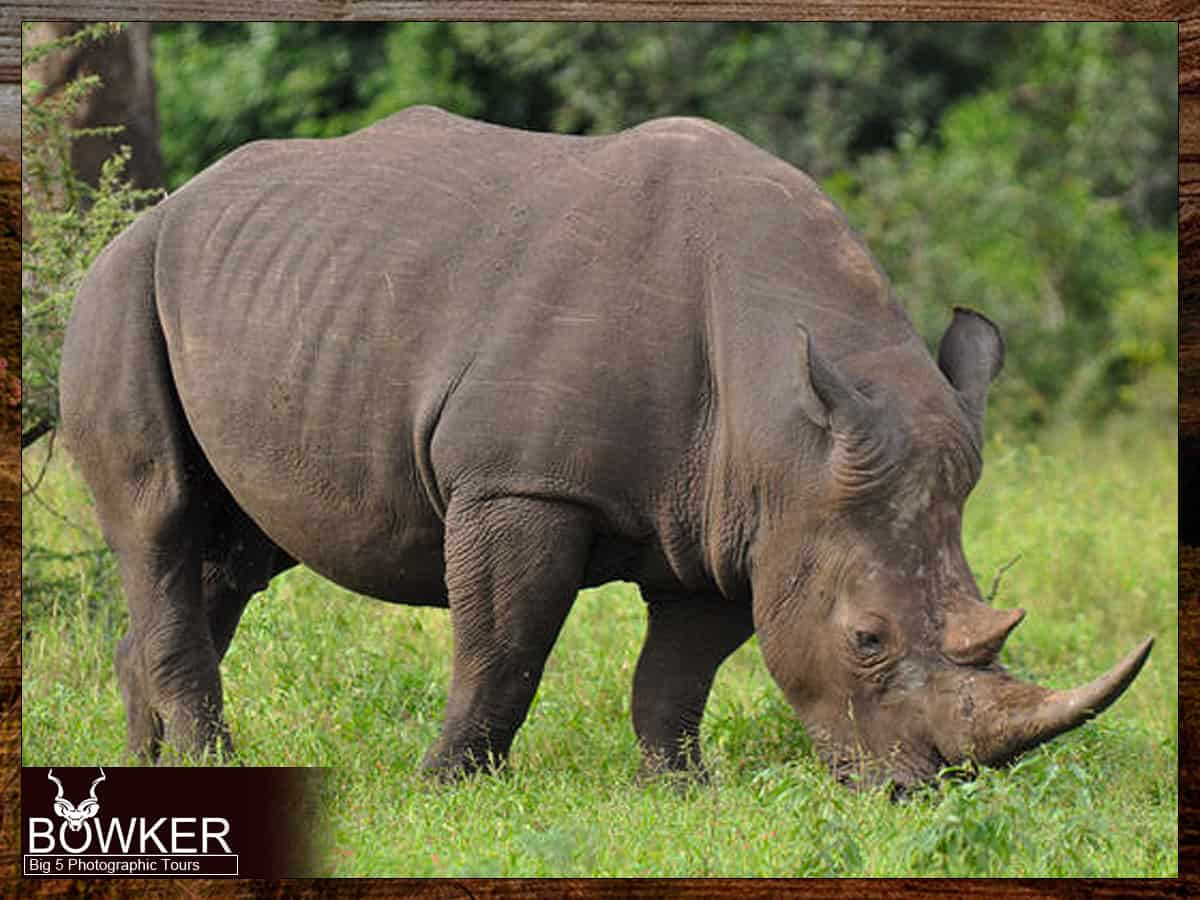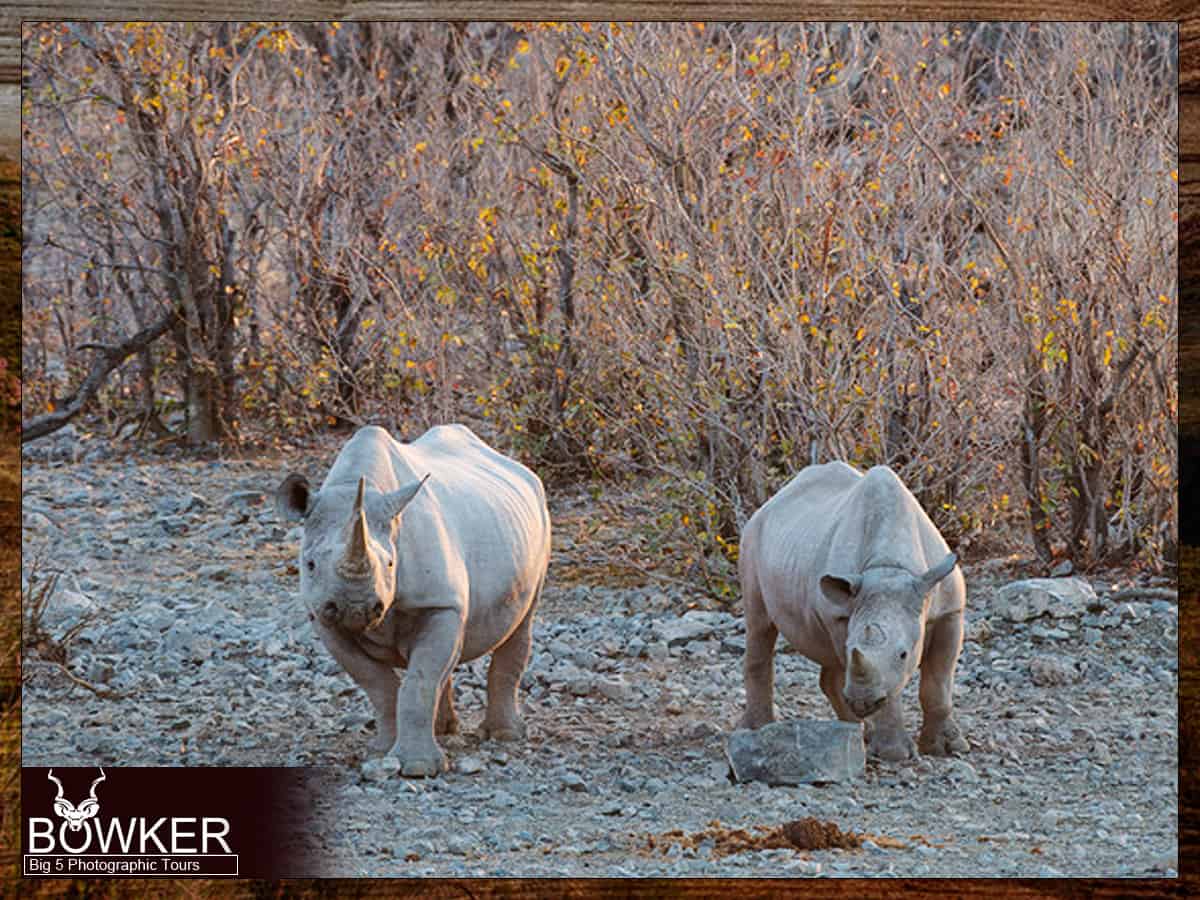Table of Contents
Introduction – Addo Elephant National Park’s Black Rhino
The black rhinoceros, often simply referred to as the black rhino, is one of the two species of rhinoceros found in Africa, the other being the white rhinoceros.
Known for their distinctive hooked upper lip and dark gray to black skin, black rhinos are iconic yet critically endangered creatures. They play a vital role in their ecosystems and have been the focus of intensive conservation efforts to protect them from poaching and habitat loss.
Rhinos are part of the Big 5, which includes cape buffalo, lions, elephants, and leopards. The park has an array of antelope species as well as spotted and brown hyena.
Numbers:
- Black rhino populations have dramatically declined over the past century.
- In the early 20th century, it is estimated that there were as many as 850,000 black rhinos in Africa.
- By the early 1990s, the population had plummeted to around 2,300 individuals due to extensive poaching.
- Conservation efforts have helped increase black rhino numbers since then, and by 2020, the global population was estimated to be around 5,600 individuals.
Distribution:
- Black rhinos were historically distributed across a wide range of African countries, including South Africa, Namibia, Zimbabwe, Tanzania, Kenya, Zambia, Botswana, Malawi, and others.
- Today, their distribution is more restricted.
- The majority of black rhinos are found in southern and eastern Africa, with significant populations in South Africa, Namibia, Zimbabwe, Tanzania, and Kenya.
- Some range states have small, reintroduced populations, such as Botswana and Malawi.
- The northern black rhinoceros subspecies (Diceros bicornis longipes) is believed to be extinct in the wild, with the last individuals disappearing from Chad in the early 2000s.
Conservation organizations, governments, and wildlife agencies continue to work diligently to protect and expand black rhino populations, combat poaching, and conserve their habitats. Efforts include anti-poaching patrols, community engagement, and translocations to establish new populations or reinforce existing
Addo Elephant Park’s Black Rhino
Reintroduction and Conservation: Black rhinoceros (Diceros bicornis) were historically found in the Eastern Cape, but their numbers declined significantly due to poaching and habitat loss. In an effort to conserve and protect these endangered species, Addo Elephant National Park initiated a black rhino reintroduction program.
Reintroduction Success: The reintroduction of black rhinos into Addo Elephant National Park has been considered a success. The park has become home to a growing population of black rhinos, contributing to the overall conservation of the species.
Behavior and Habitat: Black rhinos are known for their solitary and elusive nature. They often browse on shrubs and trees and may be active during the day or night. The park provides a diverse range of habitats, including thicket vegetation, which suits the black rhino’s browsing habits.

Diet: Black rhinos are herbivores, primarily browsers, and their diet consists of leaves, shoots, and branches from various plants. The thicket vegetation in Addo Elephant National Park offers suitable food sources for these rhinos.
Conservation Challenges: While the reintroduction of black rhinos is a positive conservation story, these animals face ongoing threats, particularly from poaching for their horns. Anti-poaching efforts and conservation measures are crucial to ensuring the safety and well-being of the black rhino population in Addo and other regions.
Tourism and Observation: Addo Elephant National Park offers visitors the opportunity to observe black rhinos in their natural habitat. Guided game drives and tours provide a chance to witness these magnificent creatures and other wildlife in the park.
Translocation of Black Rhino from Addo Elephant park
Six black rhinos from Addo Elephant National Park have been successfully relocated to Chad, marking a significant step in the effort to reintroduce rhinos to the African country. South Africa’s Minister of Environmental Affairs, Dr. Edna Molewa, oversaw the loading and departure of the rhinos on May 3, 2018, after a Memorandum of Understanding (MOU) was signed in October 2017 between South Africa and Chad. This MOU allowed for the translocation of black rhinos from South Africa to Chad, fulfilling a pledge made in 2013 by then-President Jacob Zuma to President Idris Deby.
The translocation project was a collaborative effort involving the Department of Environmental Affairs, the Government of Chad, SANParks (South African National Parks), and the African Parks Foundation. The rhinos were relocated to Zakouma National Park, which has seen a significant reduction in poaching since 2010 and witnessed the first increase in the local elephant population in over a decade.
Chad historically had two rhinoceros species, the northern white rhinoceros and the western black rhinoceros. However, poaching led to their local extinction. The MOU aimed to re-establish a rhinoceros population in Chad as part of broader biodiversity initiatives between South Africa and Chad.

The black rhinos were sourced and captured by SANParks in South Africa and will now be managed and protected by African Parks in Zakouma National Park. The agreement establishes a custodianship arrangement between the Republic of Chad and South Africa, with any calves born belonging to Chad but being used to establish new rhino populations within the continent in line with the African Rhino Range States Conservation Plan.
South Africa’s Integrated Strategic Management of Rhinoceros Approach includes translocations as one of its conservation interventions, along with compulsory measures, increasing rhino numbers, sustainability efforts, and game-changing initiatives. South Africa has also signed MOUs with several other countries in the field of Biodiversity Management and Conservation.
The translocation of black rhinos is part of a broader conservation strategy aimed at reducing environmental risks and promoting conservation flagships by establishing new populations of black rhinos in their former range states. Over the years, black and white rhinos have been translocated to various countries, contributing to their conservation efforts.

